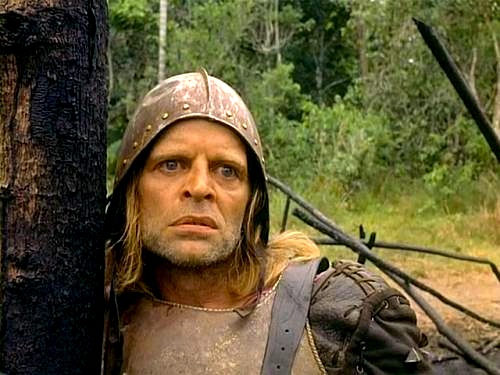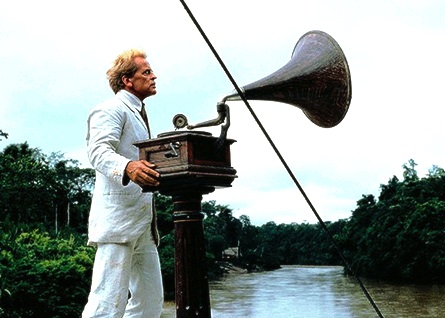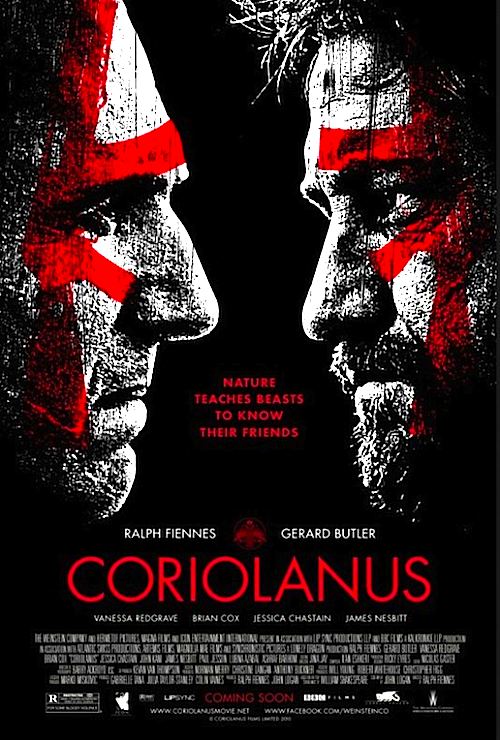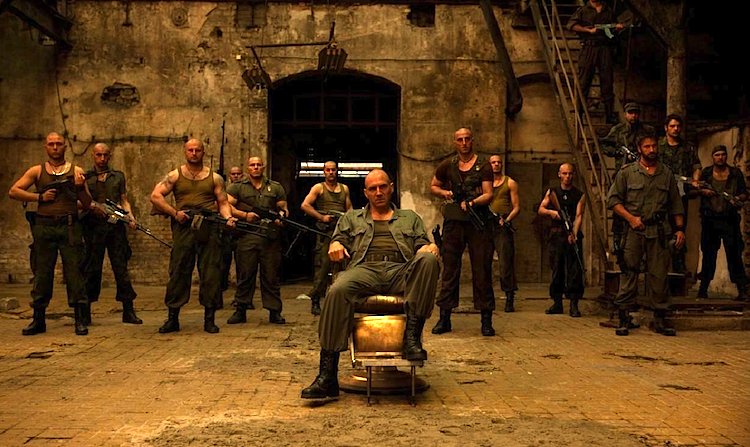[Editor’s Note: the post below appears today on the front page of The Huffington Post.]
By Govindini Murty. In Part I of my interview with Werner Herzog, we discussed his new movie Into the Abyss and its searing exploration of evil in human society. Now in Part II we turn to the world of nature, which Herzog sees as even more dangerous. In Les Blanks’ documentary Burden of Dreams, Herzog famously spoke out on the “obscenity” of the jungle, its “harmony of overwhelming and collective murder.” In Herzog’s documentary Encounters at the End of the World, he expressed skepticism toward “tree huggers and whale huggers,” while in Grizzly Man, he documented the fate of a man literally killed by his unhealthy obsession with wild nature. Herzog has even criticized the romanticizing of nature in Avatar, calling the film “an abomination because of its New Age schlock and bullshit.”
Obviously Werner Herzog has strong feelings about the proper relationship between humanity and nature. One sees this, for example, in Herzog’s stunning documentary Cave of Forgotten Dreams, released this week on DVD. Cave of Forgotten Dreams offers an extraordinary look at the 30,000 – 32,000 year-old Paleolithic cave paintings inside the Chauvet Cave in southern France – currently considered to be the oldest cave paintings in the world. As Herzog told me in Part I of our discussion on the concept of “the abyss,” “I’ve always tried to look deep inside of what we are – deep into the recesses of our existence, of our prehistory – like in Cave of Forgotten Dreams. So it is some sort of a theme that runs through quite a few of my films.”

In Cave of Forgotten Dreams, Herzog speaks eloquently of the Paleolithic cave paintings of Chauvet and their relationship to the surrounding landscape:
“These images are memories of long-forgotten dreams. Is this their heartbeat, or ours? Will we ever be able to understand the vision of the artists across such an abyss of time? [Camera shows a massive natural stone arch in the landscape.] There is an aura of melodrama in this landscape. It could be straight out of a Wagner opera or a painting of German Romanticists. Could this be our connection to them? This staging of a landscape as an operatic event does not belong to the Romanticists alone. Stone Age man might have had a similar sense of inner landscapes …”
And yet despite these poetic sentiments, Herzog vehemently denies being a Romantic; rather, he defines his approach to nature as being similar to that of the artists of the late Middle Ages.
Ultimately, if one were to search for a theme that unites Werner Herzog’s diverse body of work, it would be that respect for human life and its limits is what holds us back from the brutality of amoral nature – the abyss into which humanity’s natural instincts might otherwise plunge. As Herzog told me, he is concerned above all with civilizational breakdown – with how humanity can abandon its own heights to descend into unfathomable depths of madness and annihilation. Equally importantly though, Herzog’s love of art, of literature, of joyful exploration of the world and its peoples points to a hopeful way out of the abyss and into the light of day.

Thus, in Part II of this interview, we tackle such colorful subjects as Herzog’s anti-romantic views on nature, why he can’t help ranting about Avatar, his excitement over his Rogue Film School (in which he teaches such crucial skills as “lock picking” and “neutralizing bureaucracy”), and his belief that Wrestlemania and reality TV offer vital clues to understanding civilization. The interview has been edited for length.
GM: There is this sense in all of your films, whether they’re historical dramas or contemporary documentaries, that you wish to explore the extremes. You go from examining the molecular world in scenes from Encounters at the End of the World to these broad vistas of Antarctica or the desert or the Himalayas in your other documentaries. Do you feel that you’re part of what could be termed the German Romantic tradition in terms of having this approach to nature – seeing it both as a place of danger and a place of inspiration?
WH: I think that’s a common misconception [that] I had an affinity to romantic culture – no I don’t. I do not feel much affinity with it. I don’t feel at home with it. I’m much closer to poets like Heinrich von Kleist, Georg Büchner who wrote Woyzeck – in the early 1820s he wrote literature that belonged to the early 20th century, that was almost like Expressionism. Or Hölderlin the poet, and he’s not a Romantic poet either. He’s somewhere completely unique. He’s like a continent of his own – not really comparable to other Romantic writers of his time…
And when you look at how I depict nature – wild nature for example in Grizzly Man, it’s quite evident that it’s a completely anti-Romantic view. Timothy Treadwell who was protecting bears and who was killed and eaten by a grizzly bear together with his girlfriend, he has this kind of watered down Romanticism … that’s what I’m completely against. I would stop the course of the film even and in my comment I would have an ongoing argument with Treadwell: “Here I differ from Treadwell.” I do not see wild nature as something benign and beautiful and the bears fluffy like little pets. No, they are dangerous and aggressive and nature itself looks rather chaotic and hostile. You look at the universe – it’s very, very hostile out there.
For example in Les Blanks’ Burden of Dreams I deliver a speech/rant about the jungle and you’ll never see anything so clearly against Romanticism and the romanticizing of landscapes, romanticizing of wild nature. … It’s funny because being a German everyone immediately thinks yeah yeah he must have an affinity with Romantic culture. No, I don’t.
GM: I think I see multiple sides to Romanticism. It’s such a complex movement. What I was thinking of was not so much the warm, romantic with a small ‘r’ approach to nature but the approach that sees it as terrifying and overwhelming. For example, even going back into 16th century German art I think of Albrecht Altdorfer with his landscapes towering over very small figures, or of Bruegel’s Landscape With the Fall of Icarus with the human figures very small in the distance, on through Caspar David-Friedrich’s work [in the early 19th century] where you have the two extremes – you either have humanity dwarfed by nature, as in The Monk on the Seashore or you have humanity standing titanic over nature, as in The Wanderer over the Sea of Clouds. So it was in that sense I was asking about nature. Your quote was very striking [in Burden of Dreams] where you mention the jungle as being “full of obscenity … nature here is vile and base.”

WH: Yeah. Obscenity – that was because Kinski kept saying everything is erotic. And he would hug a tree and fornicate with it. [Laughs] Which is really against my inner convictions.
GM: But this comment about the ‘harmony of overwhelming and collective murder’ – setting aside Kinski’s comments, is that how you would see that particular jungle, or nature in general?
WH: No, you would have to be a little bit cautious. It’s a rant ‘against’ the jungle, but it came at a time of enormous strain on me – weeks and weeks and weeks where there was every single day a major disaster. And when I speak of major disaster I mean disasters like two plane crashes. Two consecutive plane crashes, and on and on and on. So, yes you have to see it in the context. But otherwise, thinking about the jungle, it’s not completely wrong what I said. But the ferocity of the rant is in a way a result of enormous pressure of disasters one after the other. … And it’s OK, I still like my rant.
GM: It’s achieved a cult status on-line. People enjoy it a great deal.

